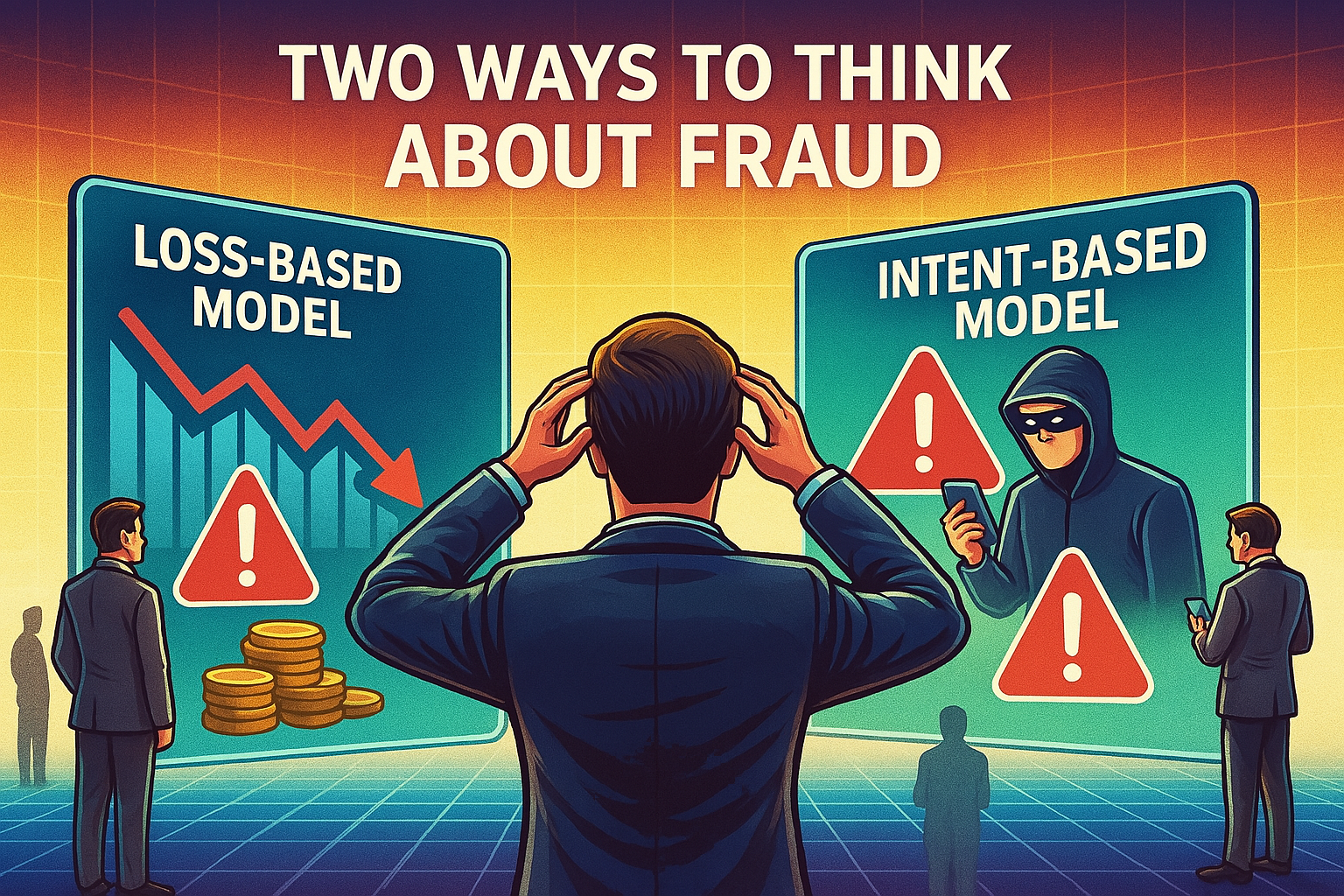In fraud prevention, we often talk about behaviors, policies, tools, and outcomes. But beneath all of that, there are two foundational ways of thinking — two mental models that shape how decisions are made.
They’re not official. You won’t find them listed in a manual. But they guide choices every day, whether consciously or not. And once you see them, you can’t unsee them.
I call them the Loss-Based Model and the Intent-Based Model. Let’s define them.
The Loss-Based Model
This approach is built around the principle of financial harm. It starts with a practical, measurable question:
Did we lose money?
If yes → investigate, act, escalate.
If no → approve, ignore, or deprioritize.
This model is widely used in fraud operations, chargeback handling, and KPI-driven environments. It’s reliable, efficient, and easy to scale.
Focuses on:
- Unauthorized payments
- Account takeovers
- Chargebacks and claims
- Stolen credentials
Strengths:
- Data-driven
- Prioritizes immediate threats
- Clear cost-benefit logic
Limits:
- Can overlook long-term manipulation
- Doesn’t capture intent or potential abuse
- Reacts to what’s already happened
The Intent-Based Model
This approach shifts the focus from outcomes to motivation. Instead of asking whether money was lost, it asks:
What was the user trying to do?
It looks at:
- Manipulative behavior
- Pattern-based abuse
- Platform misuse
- Attempts to deceive (even without financial impact)
Strengths:
- Captures emerging fraud trends
- Prevents reputational or systemic risks
- Helps shape ethical and resilient systems
Limits:
- Slower to act
- Requires judgment
- Harder to automate or scale
But it allows us to see beyond the surface — and understand when a “legitimate transaction” might not be so innocent after all.
What about potential losses?
One of the biggest challenges with the loss-based model is that it often leads us to focus on the wrong losses — the ones that are easy to count, but not the ones that really matter.
We end up preventing minor or repeated losses, the kind that look good on a dashboard. But the big losses — the painful ones — usually come from patterns we didn’t catch in time.
And that’s where the intent-based model shines. By understanding behavior early, even before it becomes “fraud,” we have a chance to stop something before it scales — before it costs real trust, money, or reputation.
So… what do we do?
This kind of reflection raises important questions:
- Should we act when we see something dishonest, even if we’re not the ones being harmed?
- Should we allow people to use a system to mislead others?
- What kind of responsibility do we have when we see something that’s not “illegal,” but clearly isn’t right either?
And maybe more importantly:
- Do we only react to what hurts now, or do we act to prevent what might hurt later?
There’s no perfect answer. But the conversation matters.
Not every act of deception leaves a loss. But that doesn’t mean it leaves no trace.
—
This reflection introduces the “Loss-Based vs. Intent-Based” model as a personal framework for thinking about fraud. While similar distinctions exist across the industry, these terms are used here to describe common but often unnamed patterns in fraud decision-making.

